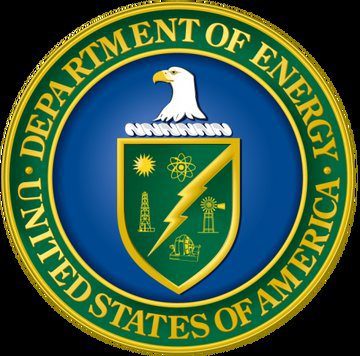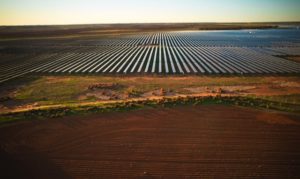
How important is clever federal government policy in pushing down the costs of developing and installing renewable energy?
In Australia, we have gone to lengths to prove it is not the only thing that matters – sheer demand and clever technology mean it gets there in the end, at least in household solar. But in the US, we have just been offered a pretty compelling reminder of how good federal policy can be a game-changer, a job creator and economic win-win.
In an announcement that might be a last ditch effort to shore up America’s solar industry before a potentially destructive Donald Trump takes the reins in January, the Obama administration’s US Department of Energy’s has made a new commitment for its SunShot Initiative to cut the cost of solar-generated electricity by another 50 per cent between 2020 and 2030.
The goal is to slash the cost of energy over the next decade, to bring down the average cost of utility scale solar in the US to US3c/kWh, and the cost in the sunniest areas to just US2c/kWh. That will beat any fossil fuel technology by a wide margin it makes you wonder how a president Trump could ever “save” the coal industry as he has promised.
The SunShot Initiative was launched in 2011 “with the goal of making solar electricity cost-competitive with traditional energy sources without subsidies by 2020.” But what’s really worth noting is that in just five years the Initiative has achieved more than 90 per cent of that goal to cut the cost of utility-scale solar electricity in the US to $US0.06c/kWh.

Today, in America, the cost of utility-scale solar averages at $US0.07/kWh. The program has also aced more than 70 per cent of its commercial and residential PV cost targets – also in just five years.
The SunShot 2030 targets aim to double down; halving utility-scale costs again to $US0.03/kWh; and aiming for $US0.04c/kWh for commercial solar, and $US0.05c/kWh for residential.
And as the DoE points out, these are just the targets for areas with an average climate and without subsidies. In the country’s sunnier regions, they’re looking to push prices as low as $US0.02c/kWh for utility-scale solar.
At these prices, the DoE points to recent modelling that suggests the US could more than double the projected amount of nationwide electricity demand that could be met by solar in 2030 and beyond.
And there’s no reason to suggest they can’t smash these new targets – Congress willing – like they did first time around.
To support the effort, up to $25 million is being made available to improve PV module and system design, including hardware and software solutions that facilitate the rapid installation and interconnection of PV systems.
Another $30 million will be made available for projects that accelerate the commercialisation of products and solutions that can help to drive down the cost of solar energy. And $10 million will be put aside for projects focused on improving solar irradiance and power forecasts used by utilities.
The DoE said it was now accepting applications for the three funding opportunities under the SunShot Initiative’s PV Research and Development Program, Technology to Market Program, and Systems Integration Program.
But will SunShot be safe under a Donald Trump administration? There has been some speculation about this since last week’s election result. But there is a level of confidence that the property tycoon’s capitalist leanings and “make America great” mantra will see SunShot for what it is: a policy success story.
“The focus of the Sunshot initiative is to help the American solar industry and companies to reduce their costs to make them more competitive,” said Christopher Mansour, vice president of federal affairs for America’s Solar Energy Industries Association (SEIA), in an interview with PV Magazine last week.
“That’s a kind of a pro-Capitalist thing that the federal government get involved in.”
While Trump doesn’t put solar in the same basket with wind (hates it), one of his main quibbles with PV is that it’s “too expensive” – a complaint he shares with some of Australia’s leading Conservative politicians.
But Mansour is confident this misconception can be cleared up.
“Part of our job has been is to talk with people on (Trump’s) campaign and his transition, to really point out that this is information that he has which may be a little bit out of date. That costs have come down tremendously, and we anticipate that they are going to continue to come down. We are competitive, and we are getting more competitive by the day,” Mansour told PV Magazine.
“I think that once we have an opportunity to talk with his people and talk with his incoming team a little bit more, and show him that this is a giant job creator for the United States.
“We are going to go from having 209,000 Americans working in solar from the end of 2019 to 400,000 by the end of 2020. These are good-paying jobs that are attractive to a lot of American workers. I am very confident they will see the advantages of current policy, and where it is helping the solar industry grow.”










